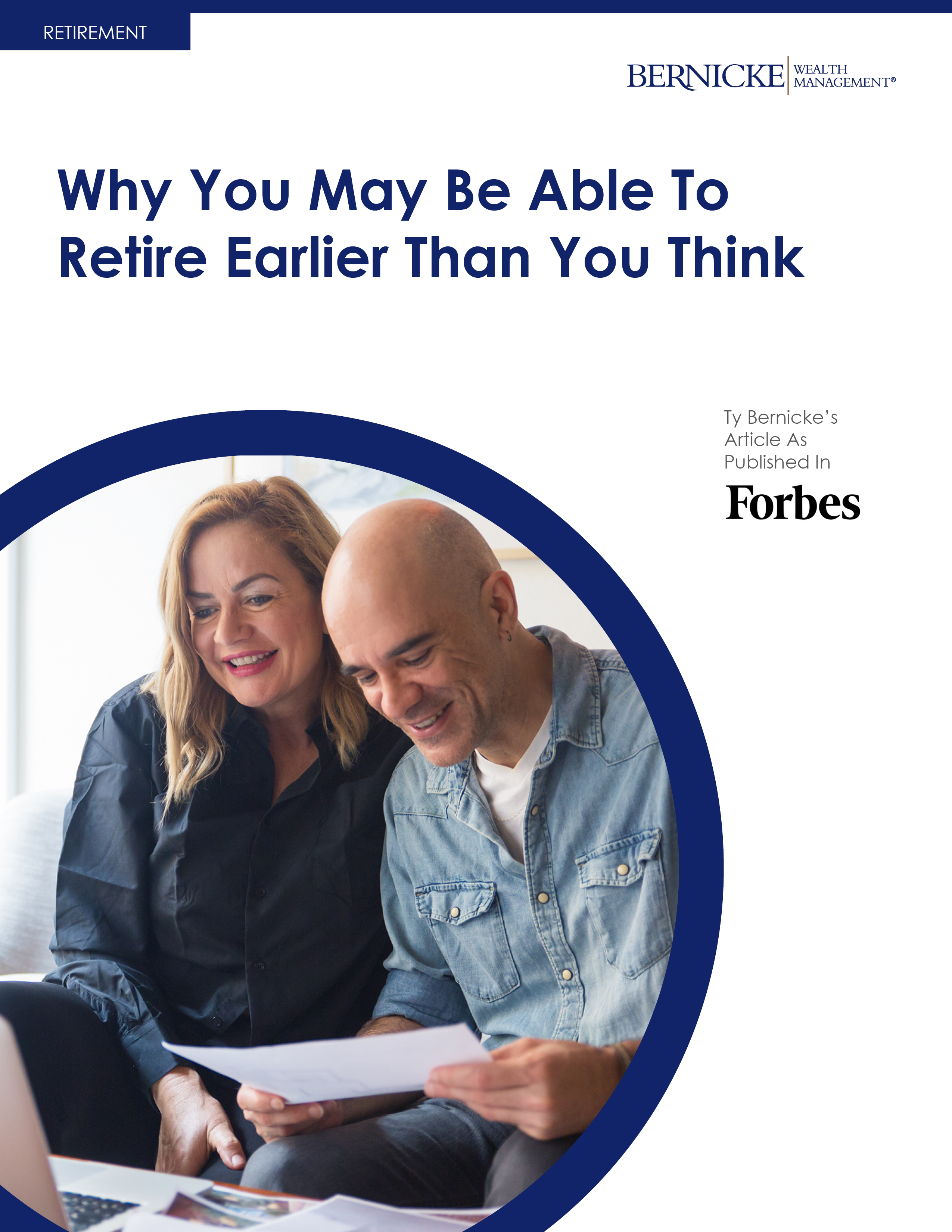In our experience, when investors come in for an initial meeting most do not completely understand the total costs of the mutual funds they own. Though there are many complexities of mutual fund expenses, to simplify this topic, five different costs will be evaluated:
- Expense Ratio
- Transaction Costs (Brokerage Commissions, Market Impact Cost, and Spread Cost)
- Tax Costs
- Cash Drag
- Advisory Fees
Expense Ratio
The expense ratio may be the only cost that some investors believe they pay when owning a mutual fund. The expense ratio is frequently used to pay marketing costs, distribution costs, and management fees. This ongoing cost can be identified by reading a mutual fund’s prospectus. The average U.S. Stock fund costs .45% per year according to Morningstar.1
Transaction Costs
A 2018 study by Busse, et al. found actively-managed U.S. equity mutual funds average approximately 0.75% in transaction costs per year.2 These costs can be difficult to determine, are not found in most prospectuses, and are not included in the aforementioned expense ratio. Transaction costs are generally more of a concern for funds that have higher turnover and/or trade in smaller stocks. A group of cost-conscious investors called the Bogleheads breaks down transaction costs into three categories: brokerage commissions, market impact, and spread cost.3
Brokerage Commissions
Brokerage commissions result from mutual fund managers buying and selling stocks for mutual fund investors inside of the fund company’s brokerage account(s). Discovering the additional expenses due to turnover can be a difficult endeavor. This task can be accomplished by making estimates based on information found in the Statement of Additional Information, a document mutual fund companies must make available upon request, but generally do not distribute to investors.
Included in brokerage commission are sometimes “soft dollar costs” which occur when mutual fund managers direct trades to brokerage companies in exchange for products or services other than trade execution, even if the brokerage companies are not providing the most cost-efficient brokerage commissions involved with buying and selling stocks. This effectively keeps this cost out of the public’s eye, “hiding” it outside of the expense ratio, and giving a fund the artificial appearance of lower-than-actual expenses. Since funds often compete prominently based on expense ratios, this can both create a conflict of interest for fund managers, and lead to apples-and-oranges comparisons of expense ratios across funds.
Market Impact Cost
The Bogleheads explain market impact cost this way: “A mutual fund making large transactions in a stock is likely to move the stock price before the order is completely filled.”3 This may negatively affect mutual fund owners in three distinct ways.
First, individuals may receive less favorable prices on certain stocks being bought and sold. This occurs when an investor’s mutual fund manager is buying or selling large quantities of stock that drive the price artificially higher or lower.
Second, a fund manager may alter its investment management strategy to avoid excessive market impact costs. This may happen if a manager chooses to enter and exit stock positions over long time horizons in an effort to mitigate sudden short-term movements in the securities it is trying to buy or sell.
Third, a mutual fund manager may be forced to include less favorable stocks in its portfolios to alleviate the market impact pressure on its favorite stocks.
Market impact cost can be a lose-lose situation for mutual fund investors because they may get unfair pricing on both the buy and sell side of stock transactions, in addition to having their mutual fund managers compromising their stock picking prowess to avoid excessive costs.
Spread Cost
Spread cost is another cost that occurs when a mutual fund manager buys and sells stocks for mutual fund owners. Spread cost reflects the difference between the best quoted ask price (the price paid for purchases) and the best quoted bid price (the price received on sales). Generally, it is higher when a mutual fund is trading international or smaller, less liquid stocks.3
Transaction costs can add substantially to the overall expense of an investor’s mutual fund. Though important, these costs are difficult to accurately quantify.
Tax Costs
Many investors pay more than their fair share in taxes when owning mutual funds. This problem is most transparent when mutual funds are owned outside of an IRA, Roth IRA, 401(k), or other tax-deferred account.
An investor who buys into a mutual fund that is holding stocks that have appreciated prior to the purchase of the fund runs the risk of paying taxes on these stocks’ gains. Essentially, even if the investor did not benefit from these stocks’ gains, this investor will share proportionately in taxes due from the sale of these appreciated stocks when the mutual fund manager makes a change. Ultimately, one can end up paying taxes on investments that other investors profited from.
Before purchasing an actively managed mutual fund in a taxable account, an investor should consider contacting the company to determine the level of embedded gains within the mutual fund.
According to data from Morningstar, the average tax cost ratio for U.S. stock funds over the last 15 years is 1.07% per year.4
Cash Drag
Another cost of owning a mutual fund is cash drag. Cash is frequently held by mutual fund managers to maintain liquidity for potential transactions and potential redemptions by mutual fund owners. This may stifle the performance of a mutual fund if the cash in the fund does not provide as strong of returns as the securities.
While this can be difficult to quantify, according to a study by NextShares Solutions, the average cost from cash drag on actively-managed equity funds over the period 2007 to 2013 was .26% per year.5 Essentially, buy-and-hold investors are subsidizing other investors’ liquidity needs.
It should be noted that cash held within a mutual fund could be beneficial during a time when stocks do poorly and incrementally more expensive when stocks perform well, relative to cash.
Advisory Fees
This final cost is only relevant to individuals working with fee-based financial and/or investment advisors who select mutual funds for their clients. Many fee-based advisors will manage an investor’s portfolio for an annual fee commonly ranging from .25% to 2.50% of the portfolio’s balance.6 This fee is required to be disclosed, and is charged in addition to the other mutual fund costs discussed.
Key Takeaways
Hidden costs have infiltrated the mutual fund industry and are being paid by many unsuspecting investors. Despite potential drawbacks, investors can acquire broad tax-efficient diversification at a fair price by utilizing mutual funds properly.
In addition to potentially utilizing cost-efficient mutual funds, high-net-worth investors can obtain broad tax-efficient diversification through direct ownership of securities or through privately managed accounts. These possibilities can increase transparency and eliminate many of the costs directly linked to mutual fund ownership. Be sure to consider these types of costs when allocating your portfolio and making investment decisions.
This is an updated version of Ty Bernicke’s article originally published in Forbes on April 4, 2011.
Oey, Patricia. “Average Fund Fees Paid by Investors Decreased 8% in 2017, the Largest One-Year Decline Ever.” Morningstar.com, 26 2018, corporate1.morningstar.com/ResearchLibrary/article/861314/average-fund-fees-paid-by-investors-decreased-8-in-2017-the-largest-one-year-decline-ever/. Accessed 11 June 2018
Busse, Jeffrey , et al. “Mutual Fund Trading Costs.” SSRN Electronic Journal, 23 Apr. 2018, papers.ssrn.com/sol3/papers.cfm?abstract_id=2350583. Accessed 24 Sept. 2018.
“Mutual Funds: Additional ” Bogleheads.org, 11 July 2016, https://www.bogleheads.org/wiki/Mutual_funds:_additional_costs Accessed 11 June 2018.
Data from Morningstar Advisor Workstation 24 Sept. 2018
“Avoidable Structural Costs of Actively Managed Mutual Funds.” NextShares Solutions LLC, Nov. 2016, funds.eatonvance.com/includes/loadDocument.php?fn=17069.pdf&dt=FundPDFs. Accessed 11 Jun
“2018 RIA Industry Study: Average Investment Advisory Fee Is 0.95%.” RIA in a Box, 18 June 2018, riainabox.com/blog/2018-ria-industry-study-average-investment-advisory-fee-is-95-percent. Accessed 24 Sept. 2018.
The use of Ty Bernicke’s research or publication of articles he has written does not indicate an endorsement of his work as an Investment Advisor. The publications did not receive compensation for publishing Mr. Bernicke’s work.
The views expressed represent the opinion of Bernicke Wealth Management. The views are subject to change and are not intended as a forecast or guarantee of future results. This material is for informational purposes only. It does not constitute investment advice and is not intended as an endorsement of any specific investment. Stated information is derived from proprietary and nonproprietary sources that have not been independently verified for accuracy or completeness. While Bernicke Wealth Management believes the information to be accurate and reliable, we do not claim or have responsibility for its completeness, accuracy, or reliability. Statements of future expectations, estimates, projections, and other forward-looking statements are based on available information and Bernicke Wealth Management’s view as of the time of these statements. Accordingly, such statements are inherently speculative as they are based on assumptions that may involve known and unknown risks and uncertainties. Actual results, performance or events may differ materially from those expressed or implied in such statements. Investing in equity securities involves risks, including the potential loss of principal. While equities may offer the potential for greater long-term growth than most debt securities, they generally have higher volatility. International investments may involve risk of capital loss from unfavorable fluctuation in currency values, from differences in generally accepted accounting principles, or from economic or political instability in other nations.



